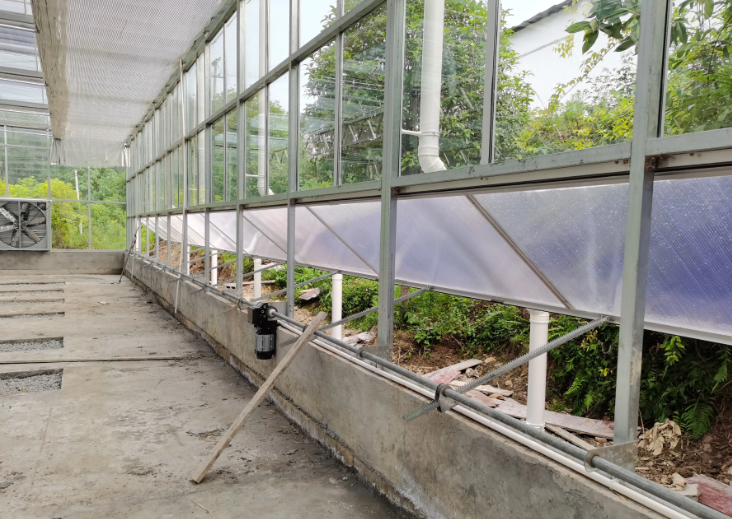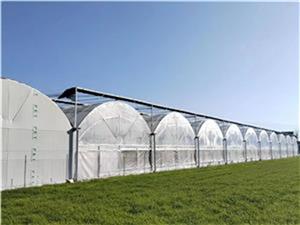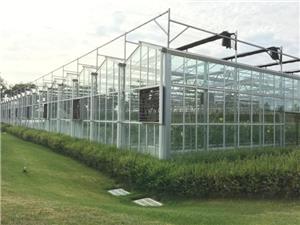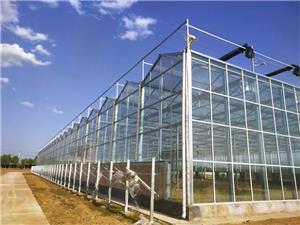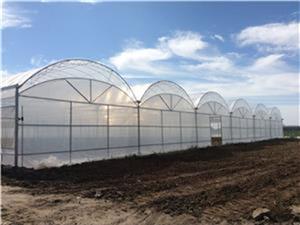Side Windows: A Key Component for Environmental Control in Multi-Span Greenhouses and Agricultural Greenhouses
In modern agricultural production, agricultural greenhouses serve as core facilities for efficient cultivation, and their environmental control capabilities directly determine crop yield and quality. As an important type of agricultural greenhouse, multi-span greenhouses have side windows whose design and configuration are crucial for optimizing environmental control effects. Whether it is the common plastic greenhouses, high-end multi-span glass greenhouses, or multi-span film greenhouses, the reasonable installation of side windows can create better conditions for crop growth and avoid planting risks caused by environmental imbalances.
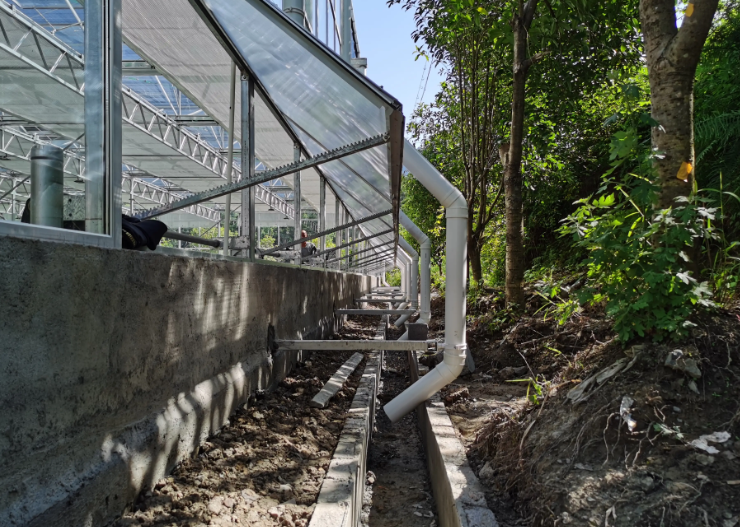
When constructing multi-span greenhouses, most designs are equipped with a fan and water curtain ventilation and cooling system on the end faces. This system plays an important role in high-temperature seasons, but relying solely on end-face ventilation makes it difficult to achieve comprehensive air circulation inside the greenhouse. From the perspective of side design of greenhouses, multi-span film greenhouses are usually equipped with electric roll-up film ventilation devices. By flexibly adjusting the height of the rolled film, ventilation is achieved. This design conforms to the structural characteristics of plastic greenhouses and multi-span film greenhouses, effectively balancing ventilation efficiency and cost control, making it a relatively reasonable configuration plan. However, some multi-span glass greenhouses are completely sealed on both sides without side windows during the design process. This approach ignores the core value of side windows in environmental control and is considered an unreasonable design.
Side windows play an indispensable role in multi-span greenhouses and agricultural greenhouses, which can be elaborated from the following four dimensions:
Firstly, side windows can accurately adjust the temperature inside the greenhouse, which is a basic requirement for environmental management in agricultural greenhouses. During the spring warming period or summer high-temperature periods, a large amount of hot air tends to accumulate inside agricultural greenhouses. If not discharged in a timely manner, the temperature will continue to rise. At this time, opening the side windows can leverage the principle of air convection to quickly expel the hot air inside the greenhouse while introducing relatively cool external air. This lowers the temperature inside the greenhouse to a range suitable for crop growth, preventing high temperatures from scorching crop leaves and disrupting the flower bud differentiation process. Especially for plastic greenhouses, due to the strong thermal insulation of their film materials, the risk of high temperatures in summer is even higher, making the cooling effect of side windows more critical.
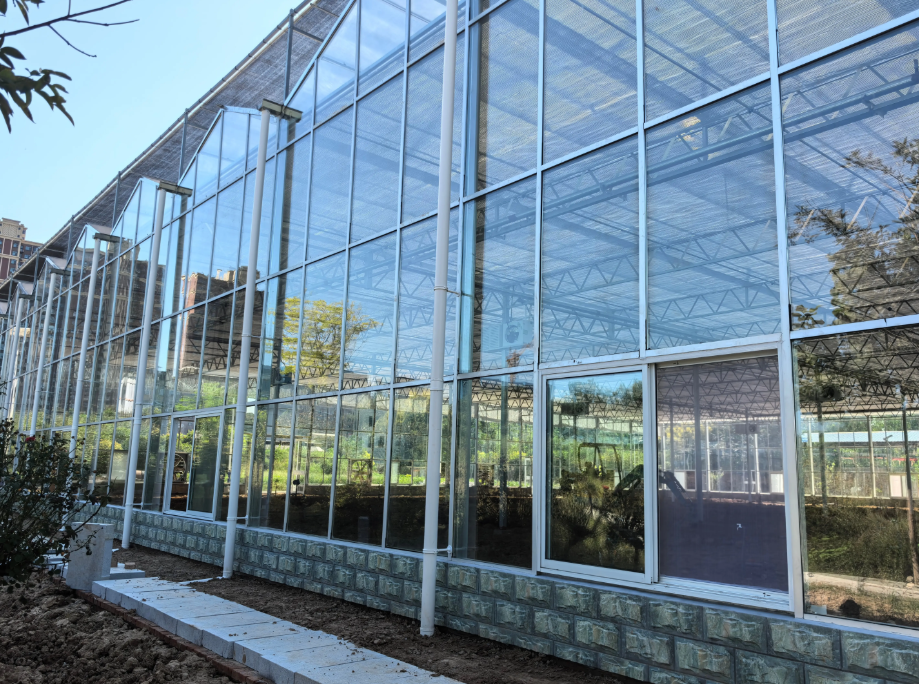
Secondly, side windows are important channels for ensuring ventilation and air exchange in agricultural greenhouses. During crop growth, photosynthesis requires an adequate supply of carbon dioxide. However, the respiration of crops inside the greenhouse and the activities of soil microorganisms continuously consume carbon dioxide and produce harmful gases such as ammonia. By opening the side windows, fresh external air can continuously enter the greenhouse to supplement carbon dioxide, meeting the needs of crop photosynthesis. At the same time, the accumulated harmful gases inside the greenhouse are discharged, improving air quality and creating a healthy environment for the development of crop roots and the growth of branches and leaves. For plastic greenhouses, a type of agricultural greenhouse with strong airtightness, the ventilation and air exchange function of side windows is even more indispensable, as it can effectively prevent crop poisoning caused by the accumulation of harmful gases.
Thirdly, side windows can flexibly adjust the humidity inside agricultural greenhouses and reduce the incidence of diseases and pests. If the humidity inside agricultural greenhouses remains excessively high for a long time, it is easy to breed humidity-loving diseases such as downy mildew and powdery mildew, and may also lead to problems such as root rot. When the humidity inside the greenhouse exceeds the standard, opening the side windows can accelerate the evaporation and discharge of water vapor inside the greenhouse, controlling the humidity within a range suitable for crops. Taking plastic greenhouses as an example, their film materials are prone to forming condensed water, which increases the humidity inside the greenhouse. The opening of side windows can promptly alleviate this problem, reduce the breeding ground for diseases and pests, and ensure the normal growth cycle of crops.
In addition, side windows can assist in adjusting the light intensity inside the greenhouse, providing suitable light conditions for crops. During the summer period of strong sunlight or in planting scenarios involving crops sensitive to light, excessive light intensity can cause scorching of crop leaves and a decline in photosynthetic efficiency. At this time, moderately opening the side windows can remove part of the heat through air flow and utilize the scattered light entering from the sides, avoiding the adverse effects of direct strong light on crops. In spring and autumn, when the light intensity is relatively weak, reasonably controlling the opening range of side windows can also reduce heat loss inside the greenhouse, balancing the utilization of light and the maintenance of temperature. This function is particularly important for plastic greenhouses and multi-span film greenhouses, as their light transmittance is greatly affected by the film material, and side windows can make up for the deficiency in light adjustment.
To sum up, side windows are an economical and practical environmental control tool in multi-span greenhouses and agricultural greenhouses. Whether constructing multi-span film greenhouses, multi-span glass greenhouses, or managing plastic greenhouses in daily operations, priority should be given to installing side windows. Electric side windows or manual sliding windows can be selected according to actual needs. Especially in spring and autumn, when the external temperature is relatively mild, there is no need to frequently start the fan and water curtain ventilation and cooling system. Simply opening the side windows can meet the needs of ventilation, cooling, and humidity adjustment. This not only reduces electricity consumption and lowers the operating costs of agricultural greenhouses but also practices the concept of environmentally friendly cultivation, conforming to the development trend of green modern agriculture. In the design of future agricultural greenhouses, the configuration of side windows should become a standard requirement, helping agricultural greenhouses achieve more efficient and sustainable cultivation and production.
